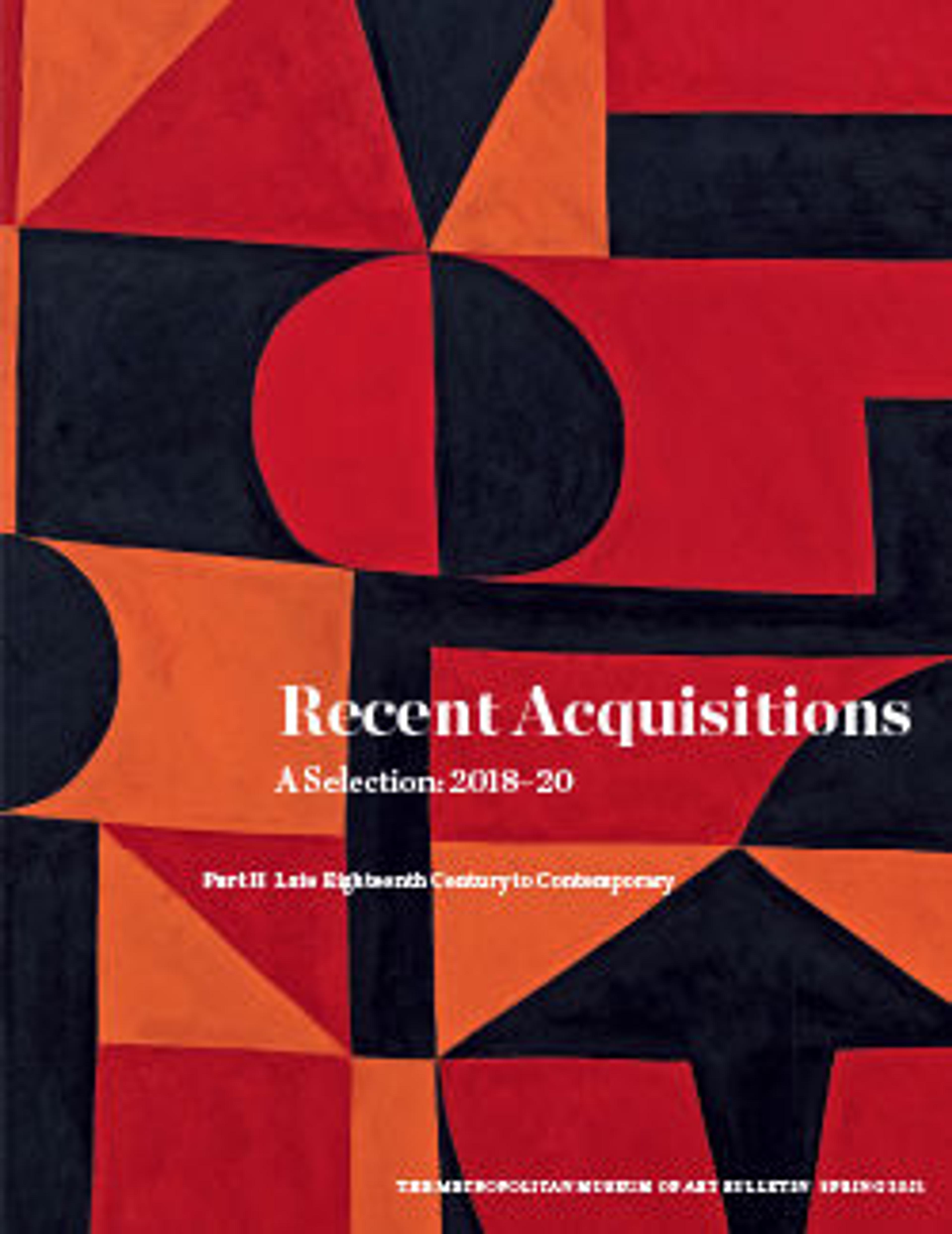Iberic
With the shape of a tondo, Iberic presents a lyrical, dynamic composition of interwoven irregular geometric and organic shapes painted in three different colors—warm red, orange and black. Cuban-American artist Carmen Herrera made this work during her crucial formative period in Paris between 1948 and 1954. Experimenting with various styles of abstraction, and influenced by movements such as Suprematism and the Bauhaus, Herrera exhibited at the Salon des Réalités Nouvelles, alongside artists such as Theo van Doesburg, Max Bill and Joseph Albers. The inspiration for Iberic came, however, from the work of Herrera’s close friend, Cuban artist Wifredo Lam. For its sensual geometry and force of color, the work has been also associated with Cuban modern artist Amelia Peláez. Of great historical significance is the fact that Herrera was the first artist to use acrylic paint in Europe as early as in 1948, and Iberic is an early demonstration of her use of this new material in art.
Artwork Details
- Title:Iberic
- Artist:Carmen Herrera (Cuban, Havana 1915–2022 New York)
- Date:1949
- Medium:Acrylic on canvas on board
- Dimensions:40 in. (101.6 cm)
- Classification:Paintings
- Credit Line:Gift of Tony Bechara, in celebration of the Museum's 150th Anniversary, 2019
- Object Number:2019.13
- Rights and Reproduction:© Carmen Herrera; Courtesy Lisson Gallery
- Curatorial Department: Modern and Contemporary Art
More Artwork
Research Resources
The Met provides unparalleled resources for research and welcomes an international community of students and scholars. The Met's Open Access API is where creators and researchers can connect to the The Met collection. Open Access data and public domain images are available for unrestricted commercial and noncommercial use without permission or fee.
To request images under copyright and other restrictions, please use this Image Request form.
Feedback
We continue to research and examine historical and cultural context for objects in The Met collection. If you have comments or questions about this object record, please contact us using the form below. The Museum looks forward to receiving your comments.
